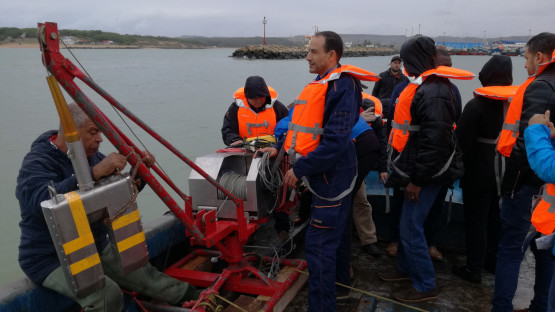A new IAEA Coordinated Research Project (CRP), entitled Development of Radiometric Methods and Modelling For Measurement of Sediment Transport in Coastal Systems and Rivers, will investigate how non-destructive nuclear techniques, such as radiotracers, can be applied to tackle issues related to sediment transport, and advance coastal engineering and harbour management. The CRP will study how to improve safety aspects of these nuclear technologies, while optimizing their cost and availability. It will also address knowledge gaps in this field in all IAEA Member States, particularly in developing countries.
More than half of the world’s population lives on seacoasts, estuaries and riverbanks, where problems caused by sediment transport are worsening. This includes:
- soil erosion;
- dragging of houses, bridges and other structures close to the shore due to the flow of water and sediments;
- decrease in water depth in harbours due to sediment deposition.
The average level of the oceans has significantly risen over the last century and experts predict that it will keep dramatically rising in the coming years. This will have a negative impact on the maintenance of harbour works, circulation in navigation channels and monitoring the silting process in dams.
More data is needed to understand the mechanism of sediment transport to improve coastal engineering and harbour management. Nuclear technology can help achieve this goal.
“Nuclear techniques are a green, efficient, cost effective measurement tool to obtain data to better understand sediment transport mechanisms,” said Joao Osso Junior, Head of the IAEA Radioisotope Products and Radiation Technology Section. “A big advantage of these techniques is that they allow experts to collect data without disrupting the hydrodynamical and physical conditions in the environment.”
Over the last years, there have been technical advancements in this field, including the development of new radiotracers, user friendly software for data interpretation and data acquisition systems, novel detectors and modelling approaches.
CRP Overall Objective
The overall objective of the CRP is to facilitate further advancement and implementation of nuclear technologies in sediment transport studies to boost coastal engineering and harbour management. Specific CRP targets to be addressed include enhancing safety aspects, optimizing the cost and improving the availability of these nuclear techniques. The CRP will also focus on how to transfer the knowledge acquired through the project to IAEA Member States, especially to developing countries.
The CRP will discuss the development of two types of techniques and methodologies, which offer unique solutions to scientific and industrial challenges:
- development of new technologies and methodologies for natural radioactivity spectrometric measurement to assess sediment transport in an efficient manner;
- development of black sand tracing, which helps avoid two main issues: the strict radiological regulations for the use of artificial radioactive tracers in the environment, as well as the lack of availability of such artificial radiotracers, as there are only a few research reactors producing them.
Many of the potential methods are non-destructive investigation methods (NDI). In other words, they can be applied without the use of artificial radioisotopes.
The results of the CRP will allow experts to better understand sediment transport mechanisms to boost Computational Fluids Dynamics (CFD) models, which provide key information to optimize the management of coastal infrastructure, harbours, dams, navigation channels, houses and beaches.
Specific Research Objectives
Specific research objectives of the CRP include:
- acquiring knowledge to better understand the mechanisms of sediment transport;
- transferring data on transport mechanisms through experimental data sets;
- improving accuracy, efficiency and safety in industrial processes through the development, enhancement and implementation of radiotracing techniques;
- establishing protocols and guidelines related to radiotracing techniques and the accompanying methodologies with a special emphasis on the improvement of their accuracy, efficiency and safety;
- producing guidelines and protocols on the use of nucleonic measurement systems for the management of sediments in industrial facilities, such as harbours and dams.
How to join this CRP
Up to 15 research contracts and agreements will be awarded under this CRP.
Interested institutions should submit their Proposal for Research Contract or Agreement by email, no later than 30 April 2021, to the IAEA’s Research Contracts Administration Section, using the appropriate template on the CRA web portal. Note that the same template can be used for both research contracts and technical contracts.
For further information related to this CRP, potential applicants should use the contact form under the CRP page.



